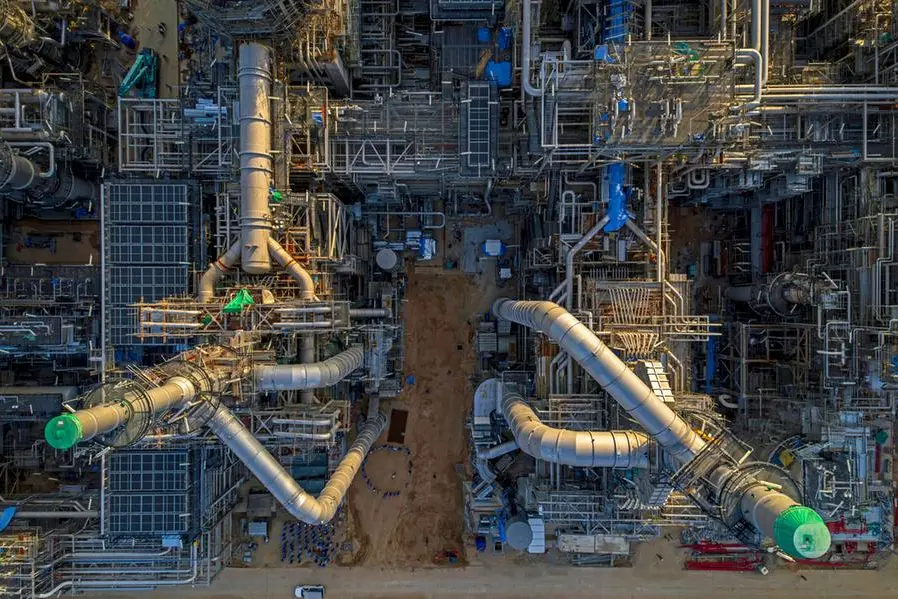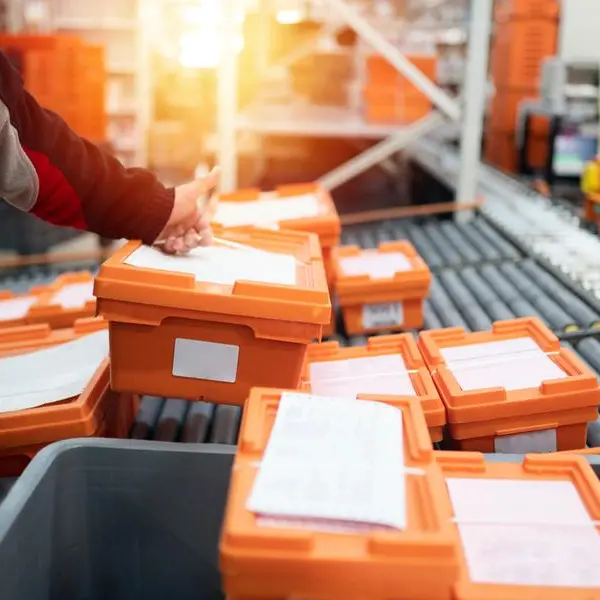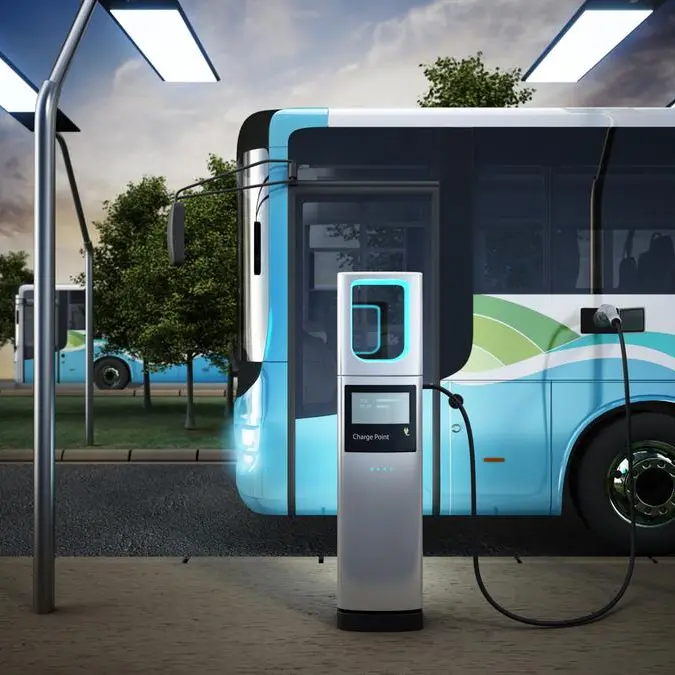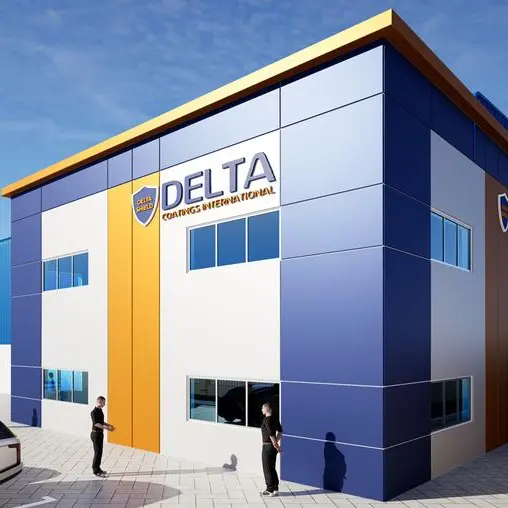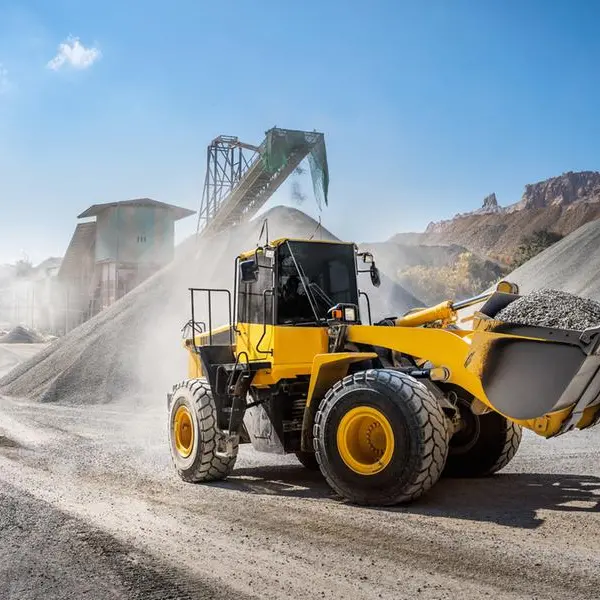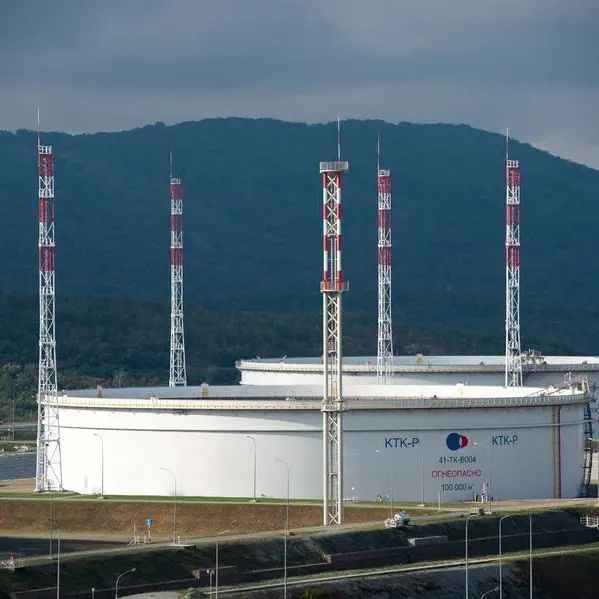PHOTO
Aerial top view products and services for the oil Refining and Petrochemical Industries. Image used for illustrative purpose. Getty Images
Catalysts remain one of the most critical yet underappreciated enablers in the global push toward decarbonisation, according to a senior executive at Clariant, a global specialty chemicals company.
“More than 80 percent of all chemicals we produce today will see a catalyst in their lifetime but it is not the visible part. Ultimately, it’s the catalyst that drives the process forward,” Christian Gückel, Clariant's Vice President of Strategy and Marketing, Business Unit Catalysts, told Zawya Projects on the sidelines of World Future Energy Summit in Abu Dhabi.
Advanced catalysts, he explained, enable efficiency gains by lowering energy use and improving raw material conversion.
“In the case of bulk chemicals like methanol and ethylene, a better catalyst may not get you to net-zero, but it can significantly reduce the carbon footprint,” said Gückel.
Apart from catalysts for improving traditional processes, Clariant also provides end-of- pipe abatement solutions through emission control catalysts that manage off-gases or remove greenhouse gases like nitrous oxide and methane.
A third and relatively new focus area is energy transition, which covers the utilisation of CO2 and green hydrogen to produce fuels or chemicals. However, progress in this area has slowed amid weak project economics, with the global green hydrogen market facing a wide cost gap—around $12/kg compared to $2.50/kg for conventional hydrogen, observed Gückel.
“Back in 2021, there was a surge of announcements totaling around 130 million tonnes per year of green hydrogen projects globally. If I’m not mistaken, nearly 120 to 124 million tonnes of that capacity still haven’t reached final investment decision (FID),” he noted.
Without a viable economic case, it's difficult for companies—even those with strong sustainability commitments—to justify investment, he said, adding that change can happen only through consumer willingness to pay more or government support via subsidies and regulation.
According to the Clariant executive, while the Middle East region has witnessed a significant push toward blue and low-carbon ammonia projects, offtake agreements remain a major challenge. In 2022, Aramco had announced plans to produce up to 11 million tonnes per year of blue ammonia by 2030. However, the target has since been scaled back, primarily due to the absence of firm offtake commitment. [Editor’s note: In March 2025, that target was revised down significantly to 2.5 million tonnes per year by 2030.]
Gückel said: “Our message to industrial customers is this: you don’t need to go from 0 to 100 percent overnight. A stepwise approach is more economically feasible than shutting down existing plants to build entirely new, and often unproven, facilities."
Excerpts from the interview:
With rising cost and economic pressures, many chemical and industrial players have re-prioritised their decarbonisation goals. In this context, is there still an appetite for advanced catalysts in traditional industries?
I've been in the catalyst industry for over 20 years. In the first 10 to 15 years, sustainability wasn't even part of the conversation. It was all about efficiency and economics, and how cheaply you could produce your products.
Now, the mindset is shifting. Economics is still important but companies are increasingly asking: how can I reduce my carbon footprint? Not the footprint of the catalyst itself, which is negligible in a petrochemical plant, but about the CO2 emissions of the overall process.
Less CO2 emissions means better energy-efficiency or improved resource use – they go hand in hand. A better catalyst not only enhances performance but also improves sustainability and reduces the product’s carbon footprint.
In sectors with sustainability mandates, ESG-linked procurement, or net-zero targets, companies are looking at Scope 3 emissions when evaluating suppliers. How does this affect a company like Clariant?
To put things into perspective, our company’s total carbon footprint is around 4 million tonnes—comparable to the emissions from a single large petrochemical plant. When we took a closer look at our technologies and the emissions reductions they enable at our customers’ sites, our calculations - according to TFS (Together for Sustainability) standards - showed that our catalysts help avoid approximately 40 million tonnes of CO2 equivalent emissions annually, when compared to the next-best alternatives.
Now 40 million tonnes is about the annual carbon footprint of a country like Switzerland or Norway. If we continue adding 5 million tonnes of avoided emissions each year, the impact becomes even more substantial.
Of course, reaching net-zero is a long-term and costly journey. That’s why we support a step-by-step approach to support our customers in progressing toward their net-zero goals. On our side, we've committed to reducing our Scope 3 emissions by 40 percent by 2030—and we've already achieved a 28 percent reduction.
From an R&D perspective, what developments are you most excited about right now?
Around 70 percent of our R&D budget still goes into improving traditional petrochemical processes because that’s where we can make the most immediate impact. The remaining 30 percent is allocated to new technologies related to CO2 utilisation, methanol, ammonia cracking, and other energy transition initiatives.
We view these new technologies as part of post-2030 roadmap. Two to three years ago, everyone thought they might scale by 2025 or 2027. But with all the delays, it's now clearly a 2030-plus game. That said, development needs to start now—so we're ready when the world is willing to invest.
Meanwhile, nearly four-fifths of our R&D spend goes toward optimising traditional processes. Petrochemicals like propylene, ethylene will be around for a long time. In fact, we expect about 50 million additional tonnes of propylene coming in over the next 15 to 20 years. That’s where we need to work on CO2 reduction.
In the case of ethylene, with traditional process, you're looking at roughly $800 per tonne depending on the region. But if you produce it from green methanol, costs can shoot up to $6,000 to $8,000 per tonne. The question is: who’s going to pay for that? The transition will take time, and that’s why our focus today is on making conventional processes more efficient and less carbon-intensive.
Can catalysts help reduce costs in emerging areas like green hydrogen, especially given ongoing discussions suggesting that the cost gap with traditional counterparts may persist for the next decade?
In the past, nobody really cared but today, they're really asking: can I run my process five degrees lower? Can I reduce the pressure? Every bar of pressure reduced means less work for the compressor, which translates into cost savings and lower CO2 emissions.
Even the catalyst industry is evolving. In the past, the focus was on selectivity—how much raw material goes in versus how much product comes out. Selectivity is still important, but customers now ask: how much energy can I save?
Moreover, when you look at the catalysts in a process, you collect tremendous amount of data. Five to ten years ago, process engineers would say, 'I know my plant.' But today, with advanced online service tools and machine learning, we’re gaining far deeper insights—it's like understanding how the heart works within the body. We can now optimise the 'heart rate' of the process to lower energy consumption.
So it’s really a combination of both worlds: fundamental research into catalyst chemistry, and a more advanced, data-driven understanding of how the catalyst interacts with the broader system of compressors, heat exchangers, and other units, how customers can optimise the operating conditions in order to steer the KPI, whether it's CO2 reduction, energy reduction or electricity.
To support customers, Clariant has developed a digital tool called Clarity, which analyses process data and simulates scenarios for improving catalyst performance and reducing energy use. For example, in the case of ammonia production, which is highly energy-intensive, we’ve seen 1 to 2 percent reductions in energy consumption, which might sound small in percentage terms but for the customer, it's huge. It can be up to $1 million a year. Globally, around 4 percent of primary energy is consumed in ammonia production, mainly for fertilisers and other applications
From your perspective, which industries are most ripe for decarbonisation?
We are seeing a lot of interest in the syngas area. Many companies involved in methanol and ammonia production aren’t necessarily aiming to go fully green, but they are focused on reducing their carbon footprint. These processes are highly energy- and CO2 intensive, so the motivation is largely economics-driven.
Right now, decarbonisation in the chemical industry is driven more by economics than regulation. With low margins and oversupply, cost efficiency is the priority. The upside is that improving economics often goes hand in hand with reducing CO2 emissions.
Lastly, could you share your observations on global market trends—what shifts are you seeing across regions?
In the US, plants are running at full capacity - primarily on blue production - thanks to a clear energy advantage. Natural gas trades at around $3 per MMBtu, compared to $14 in Europe. The Middle East also benefits from low energy costs, while China is struggling with overcapacity, which could take years to absorb.
Europe is at a disadvantage in terms of energy and labour. As long as they don't get the energy problem solved, growth will be muted. Instead of adding capacity, Europe is taking plants offline and subsidising imports. We saw a shift in project activity to the U.S. following the Inflation Reduction Act (IRA), but with the EU Green Deal and new subsidies, some of those projects may return. Europe remains the third-largest market after China and North America.
Also the days of 4, 5 or 6 percent growth rates are over because the world is kind of saturated. We have to live with 2 or 3 percent growth rates, which calls for a greater focus on efficiency, not just in catalysts, but across all industries. However, shareholders and investors still have to adapt to this new normal. That said, you will always need chemicals because they are the foundational. The industry will grow but maybe not at the pace we have seen in the past.
(Reporting by Anoop Menon; Editing by SA Kader)
Subscribe to our Projects' PULSE newsletter that brings you trustworthy news, updates and insights on project activities, developments, and partnerships across sectors in the Middle East and Africa.
